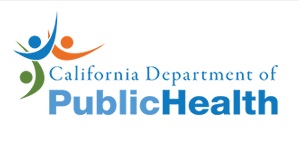Title Page
-
Conducted on
-
Prepared by
-
Location
Notice of Rights
-
The hospital has a policy for notifying all patients of their rights, both inpatient and outpatient.
-
The hospital's policy provides for determining when a patient has a representative and who that representative is, consistent with CMS and State Law.
-
The information provided to patients by the hospital complies with Federal and State Law.
-
The hospital has alternative means to communicate patients' rights when necessary (e.g. written in another language, translation services, etc.)
-
Patients, upon interview, indicate that the hospital has made them aware of their rights.
-
Medicare beneficiaries receive the "Important Message" (IM) within 2 days of admission.
-
Medicare beneficiaries who are discharged more than 2 days after the initial IM was issued have been provided with another copy of the IM prior to discharge in a timely manner.
Patient Grievances & HINN
-
The hospital's policies and procedures assure that its grievance process encourages all personnel to alert appropriate staff concerning any patient grievance.
-
The hospital adheres to its policy/procedure established for grievances.
-
Do patients/representatives know they have the right to file a complaint or grievance with the State Agency?
-
Do patients/representatives understand their rights to file grievances with the hospital?
-
Has the hospital provided the telephone number for the State agency to all patients/patient representatives?
-
Are Medicare beneficiaries aware of their right to seek review by the QIO for quality of care issues, coverage decisions, and to appeal a premature discharge?
-
Determine how effectively the grievance process works. Are patient's or the patient representative’s concerns addressed in a timely manner? Are patients informed of any resolution to their grievances? Does the hospital apply what it learns from the grievance as part of its continuous quality improvement activities?
-
Is the grievance process reviewed and analyzed through the hospital’s QAPI process or some other mechanisms that provides oversight of the grievance process?
-
What time frames are established to review and respond to patient grievances? Are these time frames clearly explained in the information provided to the patient that explains the hospital’s grievance process? On average, does the hospital provide a written response to most of its grievances within the timeframe specified in its policy?
-
Review the hospital’s copies of written notices (responses) to patients. Are all patients provided a written notice? Do the notices comply with the requirements?
Exercise of Rights
-
Does the hospital have policies and procedures to involve the patient or the patient’s representative (as appropriate) in the development and implementation of his/her inpatient treatment/care plan, outpatient treatment/care plan, discharge plan, and pain management plan?
-
Does the hospital’s policy provide for determining when a patient has a representative who may exercise the patient’s right to participate in developing and implementing his/her plan of care, and who that representative is, consistent with this guidance and State law?
-
Is there evidence that the patient or the patient’s representative was included or proactively involved in the development and implementation of the patient’s plan of care?
-
Were revisions in the plan of care explained to the patient and/or the patient’s representative (when appropriate)?
Advanced Directives
-
Review the hospital’s advance directive notice. Does it advise inpatients or applicable outpatients, or their representatives, of the patient’s right to formulate an advance directive and to have hospital staff comply with the advance directive (in accordance with State law)? Does it include a clear, precise and valid statement of limitation if the hospital cannot implement an advance directive on the basis of conscience?
-
Does every inpatient or applicable outpatient record contain documentation that notice of the hospital’s advance directives policy was provided at the time of admission or registration? Is there documentation of whether or not each patient has an advance directive? For those patients who have reported an advance directive, has a copy of the patient’s advance directive been placed in the medical record?
-
For every inpatient admission, the hospital must ask the patient whether the hospital should notify a family member or representative about the admission. If the patient requests such notice and identifies the family member or representative to be notified, the hospital must provide such notice promptly to the designated individual. The explicit designation of a family member or representative by the patient takes precedence over any non-designated relationship.
-
The hospital must also ask the patient whether the hospital should notify his/her own physician. In the case of scheduled admissions, the patient’s own physician likely is already aware of the admission. However, if the patient requests notice to and identifies the physician, the hospital must provide such notice promptly to the designated physician, regardless of whether the admission was scheduled in advance or emergent.
-
The hospital must provide the required notice promptly. “Promptly” means as soon as possible after the physician’s or other qualified practitioner’s order to admit the patient has been given. Notice may be given orally in person, by telephone, by e-mail or other electronic means, or by other methods that achieve prompt notification. It is not
-
acceptable for the hospital to send a letter by regular mail.
-
The hospital must document that the patient, unless incapacitated, was asked no later than the time of admission whether he or she wanted a family member/representative notified, the date, time and method of notification when the patient requested such, or whether the patient declined to have notice provided. If the patient was incapacitated at the time of admission, the medical record must indicate what steps were taken to identify and provide notice to a family member/representative and to the patient’s physician.
Privacy and Safety
-
Conduct observations/interview patients or their representatives to determine if patients are provided reasonable privacy during examinations or treatments, personal hygiene activities and discussions about their health status/care and other appropriate situations.
-
Review hospital policy and interview staff concerning their understanding of the use of patient information in the facility directory. Does the policy address the opportunity for the patient or patient’s representative to restrict or prohibit use of patient information in emergent and non-emergent situations?
-
Review hospital policy and conduct observations/interview staff to determine if reasonable safeguards are used to reduce incidental disclosures of patient information.
-
If audio and/or visual monitoring is utilized in the med/surg or ICU setting, conduct observations to determine that monitor screens and/or speakers are not readily visible or audible to visitors or the public.
-
The hospital identifies patients at risk for self harm.
-
The hospital identifies environmental safety risks for patients at risk for self harm.
-
The hospital staff has been trained to identify environmental safety risks regardless of whether or not the hospital has chosen to implement the use of an environmental risk assessment tool to identify potential or actual risks in the patient care environment.
-
Hospitals must provide the appropriate level of education and training to staff regarding the identification of patients at risk of harm to self or others, the identification of environmental patient safety risk factors and mitigation strategies.Hospitals are expected to provide education and training to all new staff initially upon orientation and whenever policies and procedures change. However, CMS recommends initial training and then ongoing training at least every two years thereafter.
-
Interim Patient Safety Measures (IPSM) are implemented when risks exist in the environment for patients identified as at risk for self harm.
-
Does the hospital have a written procedure for investigating allegations of abuse and neglect including methods to protect patients from abuse during investigations of allegations?
-
Do incidents of substantiated abuse and neglect result in appropriate action?
-
Has the hospital implemented an abuse protection program? Does it comply with Federal, State and local laws and regulations? Is it effective?
-
Are appropriate agencies notified in accordance with State and Federal laws regarding incidents of substantiated abuse and neglect?
-
Can staff identify various forms of abuse or neglect?
-
Can staff identify various forms of abuse or neglect?
-
What evidence is there that allegations of abuse and neglect are thoroughly investigated?
-
Does the hospital conduct criminal background checks as allowed by State law for all potential new hires?
-
Is there evidence the hospital employs people with a history of abuse, neglect or harassment?
Confidentiality of Patient Records
-
The hospital has policies and procedures addressing the protecting of information in patients’ medical record from unauthorized disclosures.
-
Appropriate safeguards are in place to protect medical record information.
-
The hospital promotes and protects the patient’s right to access information contained in his/her clinical record.
-
The hospital had a procedure for providing records to patients within a reasonable time frame. Does the procedure include the method to identify what documents were not provided and the reason?
Restraint and Seclusion
-
Review hospital restraint and seclusion policies and procedures to determine if they address, at a minimum: o Who has the authority to discontinue the use of restraint or seclusion (based on State law and hospital policies); and Circumstances under which restraint or seclusion should be discontinued.
-
The hospital staff identified the reason for the restraint or seclusion, and determined that other less restrictive measures would not be effective before applying the restraint.
-
Is the actual use of restraints or seclusion consistent with hospital restraint and seclusion policies and procedures, as well as CMS requirements?
-
The hospital’s policy and procedures employ a definition or description of what constitutes a restraint that is consistent with the regulation.
-
The hospital’s policies and procedures employ a definition or description of what constitutes the use of drugs or medications as a restraint that is consistent with the regulation.
-
The staff can identify when the use of a drug or medication is considered a chemical restraint.
-
The hospital’s policy and procedures employ a definition or description of what constitutes seclusion that is consistent with the regulation.
-
Does the staff know the definition of seclusion.
-
Do physician’s or other LIP's orders specify the reason for restraint or seclusion, the type of restraint, and the duration of restraint or seclusion?
-
The hospital considers factors other than the individual patient in determining causes for the need for restraints or seclusion.
-
Does the medical record include documentation of an individual patient assessment and a revision of the plan of care?
-
Does the medical record reflect changes in behavior and staff concerns regarding safety risks to the patient, staff, or others prompting use of seclusion or restraints?
-
The restraint or seclusion intervention the least restrictive intervention that meets the patient’s clinical needs and protects the safety of the patient, staff, or others.
-
Do ongoing documented assessments demonstrate that the restraint or seclusion intervention is needed at this time (or at a time in the past) and that the restraint or seclusion intervention remains the least restrictive way to protect the patient’s safety?
-
If the time of restraint or seclusion use is lengthy, look for evidence that the symptoms necessitating the use of restraint or seclusion have persisted. Is there evidence to indicate that the staff have evaluated whether or not the restraint or seclusion can be safely discontinued?
-
Does the plan of care or treatment reflect a process of assessment, intervention, and evaluation when restraint or seclusion is used?
-
Was the patient informed of the changes in his or her treatment plan or plan of care?
-
Did the physician or other LIP write orders that included a time limit? Were these orders incorporated into the plan of care?
-
After the discontinuation of the restraint or seclusion intervention, was this information documented in an update of the plan of care or treatment plan?
-
After behavioral restraints were applied, was an assessment immediately made to ensure that restraints were properly and safely applied?
-
Were the hospital policies and procedures followed?
-
Was the use of restraint or seclusion effective in achieving the purpose for which it was ordered? If not, were timely changes made?
-
Was there any evidence of injury to the patient?
-
The hospital’s written policies identify what categories of practitioners the State recognizes as an LIP or as having the authority to order restraint and seclusion?
-
Does the hospital have established policies for who can initiate restraint or seclusion?
-
There is a physician or other LIP order for each episode of restraint or seclusion.
-
The documentation specifically addresses the patients’ behaviors or symptoms.
-
The attending physician is consulted as soon as possible if the attending physician did not order the restraint or seclusion.
-
Each order for restraint or seclusion used for the management of violent or self-destructive behavior that jeopardizes the immediate physical safety of the patient, a staff member, or others may only be renewed in accordance with the following limits for up to a total of 24 hours:(A) 4 hours for adults 18 years of age or older; (B) 2 hours for children and adolescents 9 to 17 years of age; or (C) 1 hour for children under 9 years of age;
-
Is the renewal order for restraint or seclusion based on a comprehensive individual patient assessment?
-
If restraint or seclusion is used to manage violent or self-destructive behavior for longer than 24 hours, is there documentation of a new written order, patient assessments, and a re-evaluation by a physician or other LIP in the medical record? Does the documentation provide sufficient evidence to support the need to continue the use of restraint or seclusion? Is there evidence in the medical record that the symptoms necessitating the continued use of restraint or seclusion have persisted?
-
Does the patient’s plan of care or treatment plan address the use of restraint or seclusion?
-
Restraint or seclusion must be discontinued at the earliest possible time, regardless of the length of time identified in the order.
-
The condition of the patient who is restrained or secluded must be monitored by a physician, other licensed independent practitioner or trained staff that have completed the training criteria specified in paragraph (f) of this section at an interval determined by hospital policy.
-
Hospital policies should address: frequencies of monitoring and assessment; assessment content (e.g., vital signs, circulation, hydration needs, elimination needs, level of distress and agitation, mental status, cognitive functioning, skin integrity, etc.); providing for nutritional needs, range of motion exercises, and elimination needs; and mental status and neurological evaluations.
-
Before applying restraints, implementing seclusion, or performing associated monitoring and care tasks, staff must be trained and able to demonstrate competency in the performance of these actions.
-
Physician and other licensed independent practitioner training requirements must be specified in hospital policy. At a minimum, physicians and other licensed independent practitioners authorized to order restraint or seclusion by hospital policy in accordance with State law must have a working knowledge of hospital policy regarding the use of restraint or seclusion.
-
When restraint or seclusion is used for the management of violent or self-destructive behavior that jeopardizes the immediate physical safety of the patient, a staff member, or others, the patient must be seen face-to-face within 1 hour after the initiation of the intervention by a (A) Physician or other licensed independent practitioner; or (B) Registered nurse or physician assistant who has been trained in accordance with the requirements specified in paragraph (f) of this section.
-
The 1 hour visit must include evaluation of the patient's immediate situation, the patient's reaction to the intervention; the patient's medical and behavioral condition; and, the need to continue or terminated the restraint or seclusion.
-
The face-to-face evaluation is conducted by a trained registered nurse or physician assistant, the trained registered nurse or physician assistant must consult the attending physician or other licensed independent practitioner who is responsible for the care of the patient as specified under §482.12(c) as soon as possible after the completion of the 1 hour face-to-face evaluation.
-
All requirements specified under this paragraph are applicable to
-
the simultaneous use of restraint and seclusion. Simultaneous restraint and seclusion use is only permitted if the patient is continually monitored (i) Face-to-face by an assigned, trained staff member; or (ii) By trained staff using both video and audio equipment. This monitoring must be in close proximity to the patient.
-
Staff must be trained and able to demonstrate competency in the application of restraints, implementation of seclusion, monitoring, assessment, and providing care for a patient in restraint or seclusion: (i) Before performing any of the actions specified in this paragraph; (ii) As part of orientation; and (iii) Subsequently on a periodic basis consistent with hospital policy.
-
Hospitals must report deaths associated with the use of seclusion or restraint.
Patient Visitation Rights
-
A hospital must have written policies and procedures regarding the visitation rights of patients, including those setting forth any clinically necessary or reasonable restriction or limitation that the hospital may need to place on such rights and the reasons for the clinical restriction or limitation.
-
The hospital must inform each patient (or support person, where appropriate) of his or her visitation rights, including any clinical restriction or limitation on such rights, when he or she is informed of his or her other rights.
-
The hospital must inform each patient (or support person, where appropriate) of the right, subject to his or her consent, to receive the visitors whom he or she designates, including, but not limited to, a spouse, a domestic partner (including a same-sex domestic partner), another family member, or a friend, and his or her right to withdraw or deny such consent at any time.
-
A hospital must not restrict, limit, or otherwise deny visitation privileges on the basis of race, color, national origin, religion, sex, gender identity, sexual orientation, or disability.
-
A hospital must ensure that all visitors enjoy full and equal visitation privileges consistent with patient preferences.






















